Profile of Trees
Black Poplar
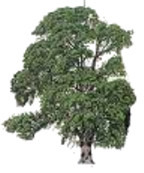


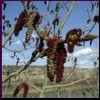
Male and female catkins appear on separate trees in March and are pollinated by the wind. The red male catkins soon fall whilst the greenish females develop into masses of white fluff at the end of June which scatter the seeds in the wind. The subspecies betulifolia is one of the rarest trees in Britain and is mostly found in wet areas along the margins of rivers. Only about 7,000 trees are known, of which only about 600 have been confirmed as female.
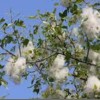
Common Hornbeam
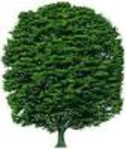


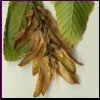
The wind pollinated male and female catkins appear on the same tree in May. The fruit is a small 7-8mm long nut, partially surrounded by a three-pointed leafy involucre 3-4cm long; it matures in the autumn.. The wood of the hornbeam is extremely hard and is not widely used for timber due to the difficulty in working it. The wood was valuable for fuel as it burnt hot enough to smelt iron.
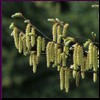
Common Lime
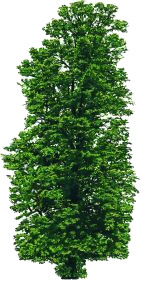
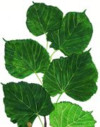
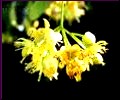
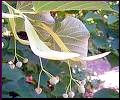
Crimean Lime

 The rounded toothed leaves, 10cm long, are glossy and usually a much richer green than those of Common Lime, and the minor veins do not indent the leaf surface. The leaf undersides have large brown tufts under the vein joints.
The rounded toothed leaves, 10cm long, are glossy and usually a much richer green than those of Common Lime, and the minor veins do not indent the leaf surface. The leaf undersides have large brown tufts under the vein joints. 
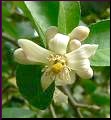
The tree blooms in July or August and has yellowish white flowers in cymes of 3 to 7 flowers. The fruit is quite small, up to 1cm, egg-shaped and downy brown nutlets. The tree has an ornamental appearance in late summer. Limes are widely considered a female tree and have links to fertility. It is not known how this came about but it is thought to date back to the Dark Ages.
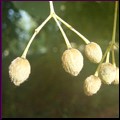
Silver Lime
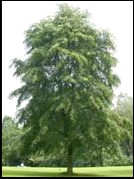
Silver Lime (Tilia tomentosa). It is a deciduous tree growing up to 35m tall with a trunk up to 2m in diameter. The leaves are alternately arranged, rounded to triangular-ovate, 4-13 cm long and broad with a 2.5-4 cm petiole, green and mostly hairless above, densely white hairs below, and with a coarsely toothed margin.

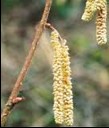
The flowers are pale yellow, hermaphrodite, produced in cymes of three to ten in mid to late summer with a pale green subtending leafy bract. They have a strong scent and are pollinated by honeybees but the nectar is toxic to bumble bees. The fruit is a dry nut-like drupe 8-10mm long, downy, and slightly ribbed.
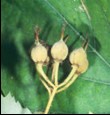
Silver Pendent Lime
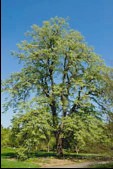

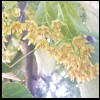
The flowers are pale yellow, hermaphrodite, produced in cymes of three to ten in mid to late summer with a pale green subtending leafy bract. They have a strong scent and are pollinated by honeybees but the nectar is toxic to bumble bees. The fruit is a dry nut-like drupe 8-10mm long, downy, and slightly ribbed.
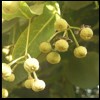
Common Walnut
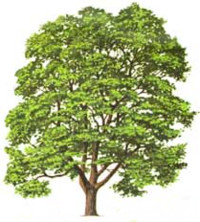
 It has alternate, pinnate leaves 20-45cm long with 5-9 (usually 7) elliptical leaflets with a somewhat larger terminal leaflet.
It has alternate, pinnate leaves 20-45cm long with 5-9 (usually 7) elliptical leaflets with a somewhat larger terminal leaflet. 
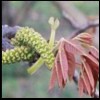
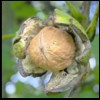
Huntingdon Elm
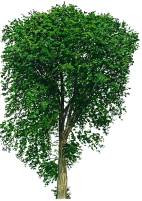

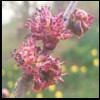
As with other elms, the flower buds, prominent over winter, open in early spring to reveal purplish flowers. The flowers have male and female parts, and the fertilised seeds develop into bunches of yellow oval wings. Many elm trees have died from Dutch Elm Disease which is a fungus spreading down the tree’s vascular system blocking the sap flow and progressively killing the whole tree. The Huntingdon Elm is a hybrid and is less susceptible to the disease than the English Elm.
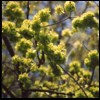
Wych Elm


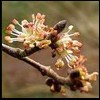

Horse Chestnut
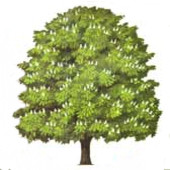
Horse Chestnut (Aesculus hippocastanum) TA deciduous tree growing to about 30m with a dense broad crown. Main trunk rather short and twisted. Long stalked leaves with 5-7 obovate leaflets radiating from a central point. Leaflets about 25cm long with double toothed margins.
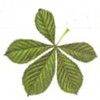
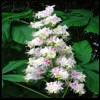
It flowers in May to June, after the leaves have opened, in large upright many-flowered panicles. It fruits from September with green spike-covered husks containing brown conkers.
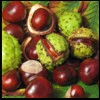

IMost horse chestnuts are infected by leaf miners whose larvae dig into the leaves of the tree and cause small brown patches which spread across the entire tree. Despite the poor appearance, there is no evidence that this damage by the moth leads to a decline in tree health or tree death.
Red Horse Chestnut
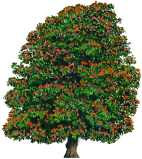
Red Horse Chestnut (Aesculus x carnea) The red or pink horse chestnut is a hybrid between the common species and the red buckeye, a crimson flowering tree from the southern Unites States. It has a rounded to wide rounded canopy that reaches 10m wide at maturity but it rarely grows above 20m high. The leaves are slightly glossy and crumpled. There are usually 5 leaflets but there can be 6 or 7. The leaflets are jaggedly toothed or serrated.


The flower spike is 12-20cm tall with the indivicual flowers much smaller. The nuts look a bit like a regular chestnut and are surrounded by a thick hull. The conker nut matures in late summer to early autumn.

London Plane
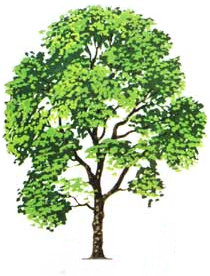
London Plane (Platanus x hispanica). The London Plane is a hybrid between the American Plane and the Oriental
Plane. It is a large deciduous tree growing to 20-35m tall and with an attractive bark. The leaves are large, thick and glossy with palmate lobes. The leaf blade is 10-20cm long and 12-25cm broad, with a 3-10cm petiole.


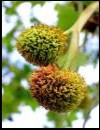
It flowers in May to June, borne as male and female balls. The male flower-heads fall off the branch after shedding their pollen. After being pollinated, the female flowers become achenes that aggregate on the ball which remain on the tree all winter.
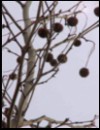
Oriental Plane
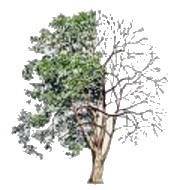

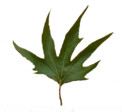

The flowers and fruit are round and burr like, borne in clusters of between 3 and 6 on a stem. They can be up to 25 mm across. Male and female flowers are separate but on the same tree. Plane trees are wind-pollinated. The male flower-heads fall off the branch after shedding their pollen.
Field Maple
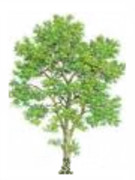
Field Maple (Acer campestre) The Field Maple is a maple native to much of Europe including England (where it is the only native maple). It is a medium-sized deciduous tree reaching 15-25m tall, with finely fissured, often somewhat corky bark. The leaves are in opposite pairs, 5-16cm long (including the petiole) and 5–10cm broad, with five blunt, rounded lobes with a smooth margin.



Norway Maple
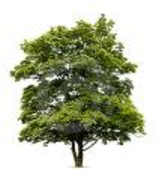
Norway Maple (Acer platanoides) The Norway maple is a deciduous tree native to Europe and growing to
20–30m with a broad, rounded crown. The bark is grey-brown and shallowly grooved. The summer foliage is dark green and turns yellow, occasionally orange or red, in the autumn. The leaves have five lobes each bear one to three side teeth.
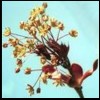

Flowering occurs in early spring before the new leaves emerge. They are in clusters of 15–30 yellow to yellow-green flowers. Each flower has five sepals and five petals 3–4mm long. The fruit is a double samara with two winged seeds, the seeds are disc-shaped, strongly flattened, 10–15mm across and 3mm thick. The wings are 3–5cm long, widely spread, approaching a 180° angle. It typically produces a large quantity of viable seeds.
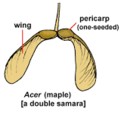
Rowan

Rowan (Sorbus aucuparia) A deciduous tree growing to about 15-20m with a loose rounded crown, often multi-stemmed. The wood is tough and strong, and was traditionally used for bows, tool handles, cart-wheels and beams. It has alternate, pinnate leaves 10-20cm long with 9-17 pointed and toothed leaflets.

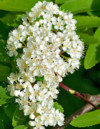
It flowers in May to June with clusters of white flowers each with 5 petals. This Fructu Luteo cultivar fruits in August with dense bunches of orange berries which stay on the tree well into winter. The rowan has many associations with magic and witches. Its protective power is thought to come from the bright red berries, as red was thought to be the best colour for fighting evil.
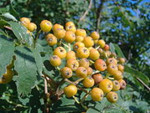
Dawn Redwood
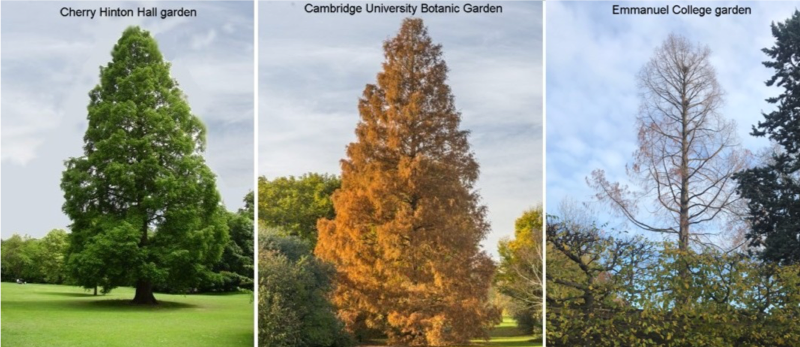
Dawn Redwood (Metasequoia glyptostroboides). The Council’s policy is to plant a mix of both native and non-native trees. Doing this will help protect against the loss of one or more species through pest, disease or climate change. FoMC floated the idea that a Dawn Redwood would be an exciting newcomer to Midsummer Common. They are already evident around Cambridge and have a striking pose in summer, autumn and winter.
They are fast growing and long-lived deciduous conifers making them excellent carbon sinks. They are well-suited to floodplains and tolerate drought. They are not invasive so do not pose a threat to native species. They provide the aesthetic benefit of beautiful foliage in the summer and minimal light obstruction in the winter. They greatly enhance the aesthetic appeal of any area in which they are planted. One has alreay been planted and two more are promised.
Silver Birch
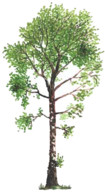
Silver Birch (Betula pendula) The Silver Birch is a deciduous tree that grows to about 30m. In young trees the bark is reddish-brown, but this changes to white interspersed with black patches as they mature. The new leaves emerge in April and are bright green at first, with the colour darkening to a duller green after a week or two. The shape is triangular tapering to a point with teeth up the straight sides.


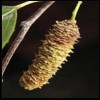
The male catkins hang down and turn yellow with pollen in spring pollinating the female catkins by the
assistance of the wind. The female catkins mature and sheds their winged seeds in early to late autumn. One of the important functions which birch trees fulfil in ecosystems is that of improving soils. They are deep-rooted, and their roots draw up nutrients into their branches and leaves, which the trees use for their growth.
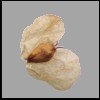
Common Osier
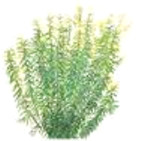

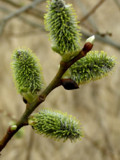

Crack Willow

Crack Willow (Salix fragilis). Crack Willow is a deciduous tree up to 20m high, with a short, thick trunk, a deeply ridged bark and a rounded crown. It has wide-spreading branches and brittle, fragile twigs which break (crack) cleanly at the base when bent down. The leaves are narrow, alternate, 9-15cm long and up to 3cm wide. They endin a point, often turned in one direction and have coarse, single-toothed margins. They are dark, shiny-green and hairless above, bluish-green and hairy only when young below.


Male and female flowers are in 4-6cm catkins, which appear with leaves on separate trees in April and May. The male catkins have pale yellow scales and golden-yellow anthers. The female catkins are also yellow. The flowers have short stigmas and mature into white woolly seeds in summer. The tree is often planted next to rivers as the roots help stabilise the banks. It also attracts insects in the spring and was favoured by beekeepers.
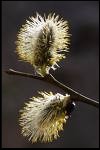
Golden Weeping Willow
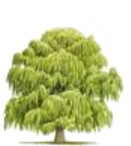

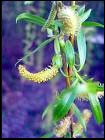
Catkins appear with the leaves in late March until April. Both male and female whitish flowers are in the same catkin. The fruit is a bivalvate capsule with numerous seeds on a silky hair shaft.

Grey Sallow

Grey Sallow (Salix cinerea). Grey Sallow is a tall shrub or small deciduous tree which usually grows no higher than 10m tall. It is generally much branched from the base but can sometimes be found with a distinct trunk. Branches spread to form a broad, rounded or flattened crown. It has dark grey-brown bark which becomes fissured with age. The leaves are very varied, usually obovate, spirally arranged, 2-9cm long and 1-3cm broad (exceptionally up to 16cm long and 5cm broad) They are dull grey-green and pubescent above and ash grey and hairy below, with a crenate margin.


Male and female flowers are in 4-6cm catkins, which appear with leaves on separate trees in April and May. The male catkins have pale yellow scales and golden-yellow anthers. The female catkins are also yellow. The flowers have short stigmas and mature into white woolly seeds in summer. The tree is often planted next to rivers as the roots help stabilise the banks. It also attracts insects in the spring and was favoured by beekeepers.

White Willow


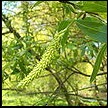
The flowers are produced in catkins in early spring. The male and female catkins grow on separate trees; the female ones are slightly shorter at pollination, lengthening as the fruit matures. When mature in mid summer, the female catkins comprise small capsules each containing numerous minute seeds embedded in white down which aids wind dispersal. Cricket-bat Willow (Salix alba ‘Caerulea’) is grown as a specialist timber crop in Britain, mainly for the production of cricket bats, but also for other uses where a tough, lightweight wood that does not splinter easily, is required.
